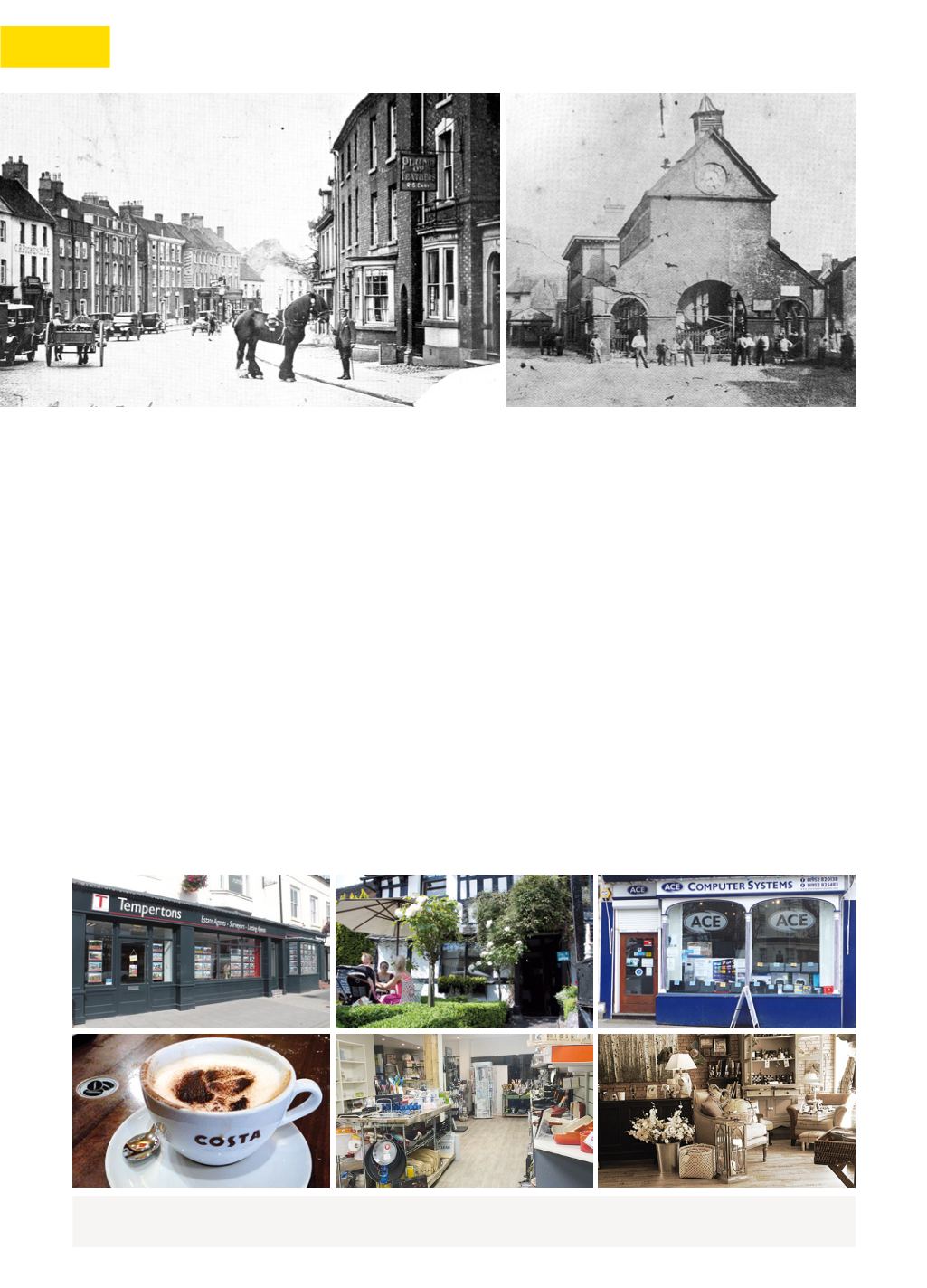

The town along the High Street
Newport Street is and always was a one-street town. Until the 20th century
most people lived and worked on or near the High Street.
Discover more at
bit.ly/newportshopsIn the 12th century Henry 1 planned many 'new towns',
and Newport became one of them. The king's aim was
undoubtedly, to gain income from these towns.
The result is a planned town. The distinctive long wide
street running north to south with equal plots of land
running at right angles to the east and west.
These are called 'medieval burgage plots'. If you look down
some of the plots today (such as Barclays Yard, Cock Yard,
Royal Victoria car park) you can appreciate the length of
these plots.
The wide main street was designed not only for traffic
travelling along the main London to Chester road, hence
the many inns. But also for the town's market to be held,
which. Henry 1 also granted the town. The main markets
were held on the High Street. The animal market was held
on the main road, the retail market was held in and around
William Adams' market hall (Central Square area) and a
cheese/butter market was around The Butter Cross.
In the 1850s a groups of local entrepreneurs proposed a
'Market Company'. This was created via an act of parliament,
and, as a result, the old market halls were swept away.
A new indoor market was built and the cattle market was
moved to the back of the new market hall, which helped
keep the animal muck off the High Street.
The 1860 market hall is still used today, but the animal
market is now Smithfield Mews housing on Stafford Street.
Historykindlyprovidedby
LindaFletcher
,ArchivistNewport
History Society. For further fascinating insights into the
heritageofNewportanditssurroundingvillagespleasevisit...
www.newporthistorysociety.org1
4
5
2
3
6
Horse & man outside 'Plume of Feathers' inn, looking down the High Street to Lower Bar (left), William Adams' market hall
34
SEPTEMBER 2015



















